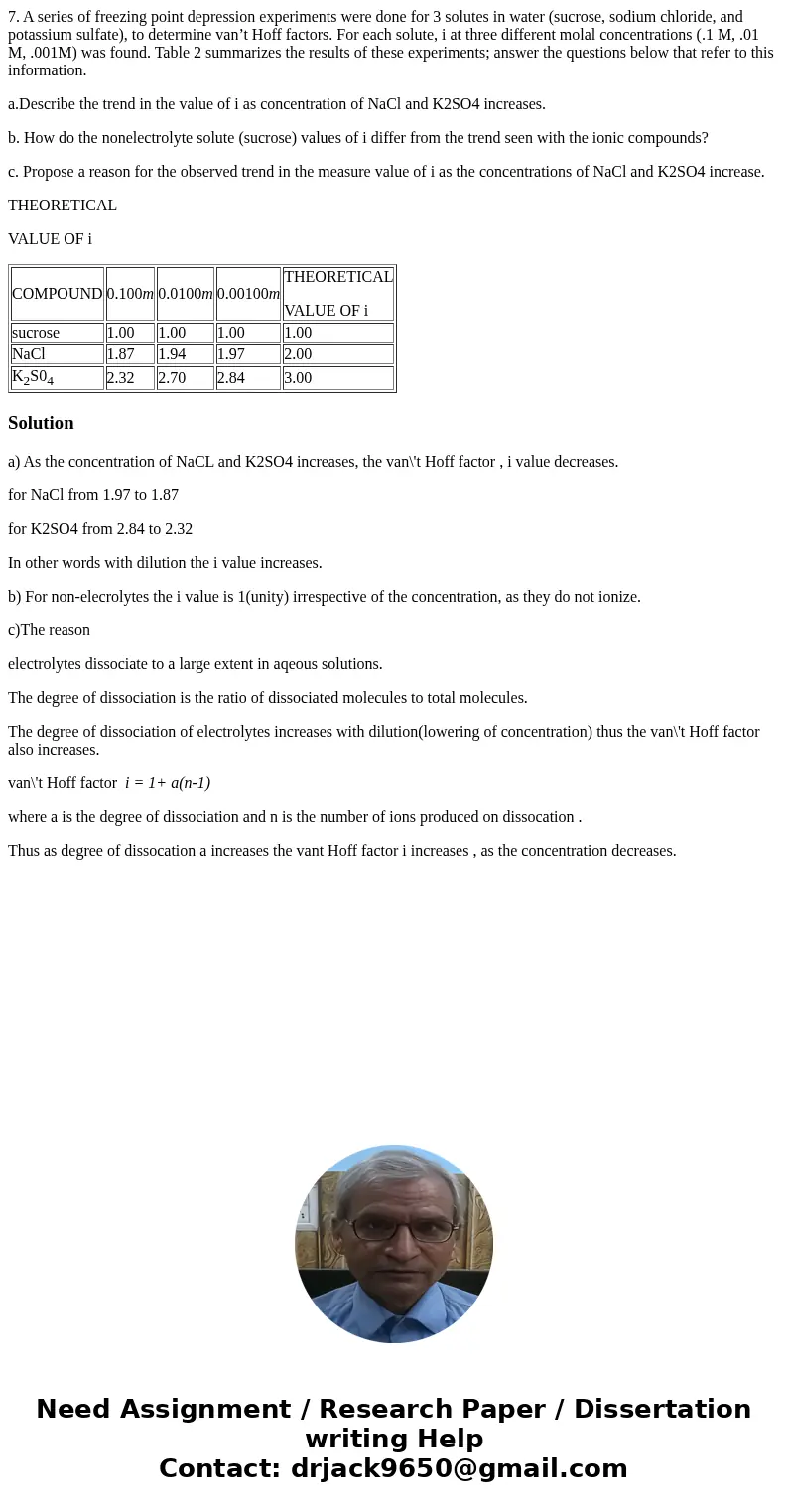7 A series of freezing point depression experiments were don
7. A series of freezing point depression experiments were done for 3 solutes in water (sucrose, sodium chloride, and potassium sulfate), to determine van’t Hoff factors. For each solute, i at three different molal concentrations (.1 M, .01 M, .001M) was found. Table 2 summarizes the results of these experiments; answer the questions below that refer to this information.
a.Describe the trend in the value of i as concentration of NaCl and K2SO4 increases.
b. How do the nonelectrolyte solute (sucrose) values of i differ from the trend seen with the ionic compounds?
c. Propose a reason for the observed trend in the measure value of i as the concentrations of NaCl and K2SO4 increase.
THEORETICAL
VALUE OF i
| COMPOUND | 0.100m | 0.0100m | 0.00100m | THEORETICAL VALUE OF i |
| sucrose | 1.00 | 1.00 | 1.00 | 1.00 |
| NaCl | 1.87 | 1.94 | 1.97 | 2.00 |
| K2S04 | 2.32 | 2.70 | 2.84 | 3.00 |
Solution
a) As the concentration of NaCL and K2SO4 increases, the van\'t Hoff factor , i value decreases.
for NaCl from 1.97 to 1.87
for K2SO4 from 2.84 to 2.32
In other words with dilution the i value increases.
b) For non-elecrolytes the i value is 1(unity) irrespective of the concentration, as they do not ionize.
c)The reason
electrolytes dissociate to a large extent in aqeous solutions.
The degree of dissociation is the ratio of dissociated molecules to total molecules.
The degree of dissociation of electrolytes increases with dilution(lowering of concentration) thus the van\'t Hoff factor also increases.
van\'t Hoff factor i = 1+ a(n-1)
where a is the degree of dissociation and n is the number of ions produced on dissocation .
Thus as degree of dissocation a increases the vant Hoff factor i increases , as the concentration decreases.

 Homework Sourse
Homework Sourse